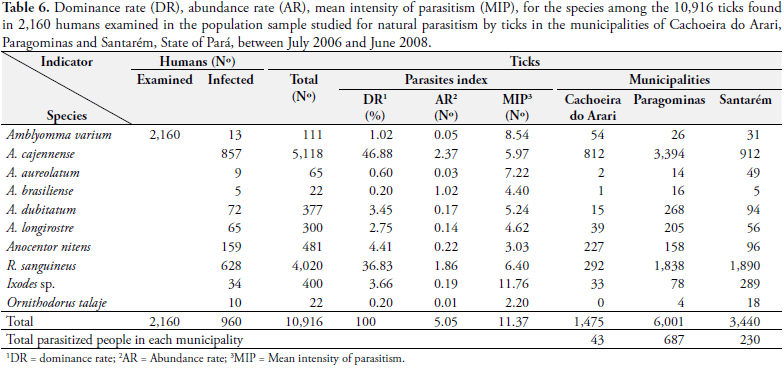Assuming the existence of tick parasitism in humans in the State of Pará, an aggregate observational study was developed along a transversal line in three cities of the State, during two years. Interviews and examinations of 2,160 townspeople and tourists were carried out, without discrimination of ethnic, sex, age, or social status, and classified for effects analyzed for four bands of age, six types of activities in the society, and two sexes. Larvae, nymphs, and adults of ticks had been identified with cases of parasitism involving six species, of the genus Amblyomma, the genus Ixodes, Rhipicephalus sanguineus, Anocentor nitens, and Ornithodorus talaje (the first case registered in Pará), infecting human beings. Adults and agricultural workers were most frequently attacked, followed by students. A. cajennense and R. sanguineus are the species most frequent in the parasitism affecting humans, and A. cajennense is the dominant species. The statistical prevalence was largest in Cachoeira do Arari, Ilha do Marajó. In Santarém the greatest average intensity of parasitism was for R. sanguineus, and in the other locations it wasfor A. cajennense. Agricultural workers faced the greatest risk from parasitism, and to place in practice elementary measures of prevention would reduce by 25% the number of cases.
Ixodidae on human beings; Cachoeira do Arari; Marajó Island; Santarém; Paragominas city






